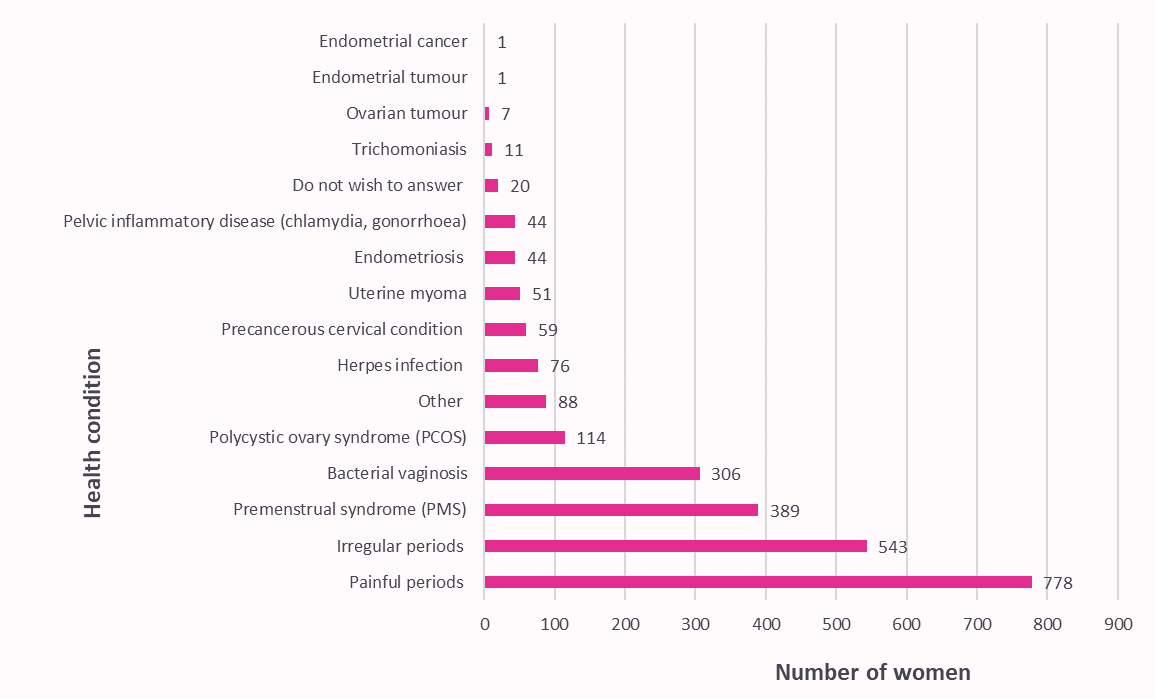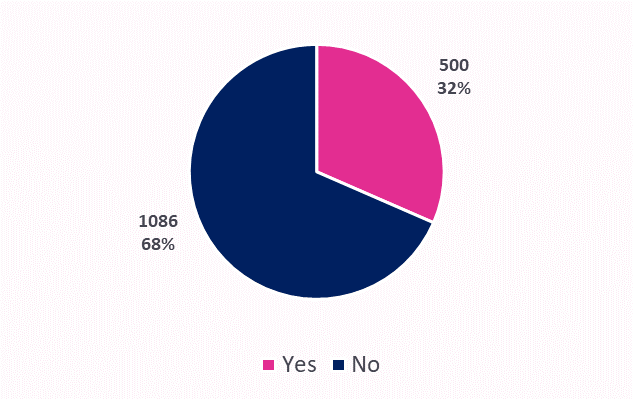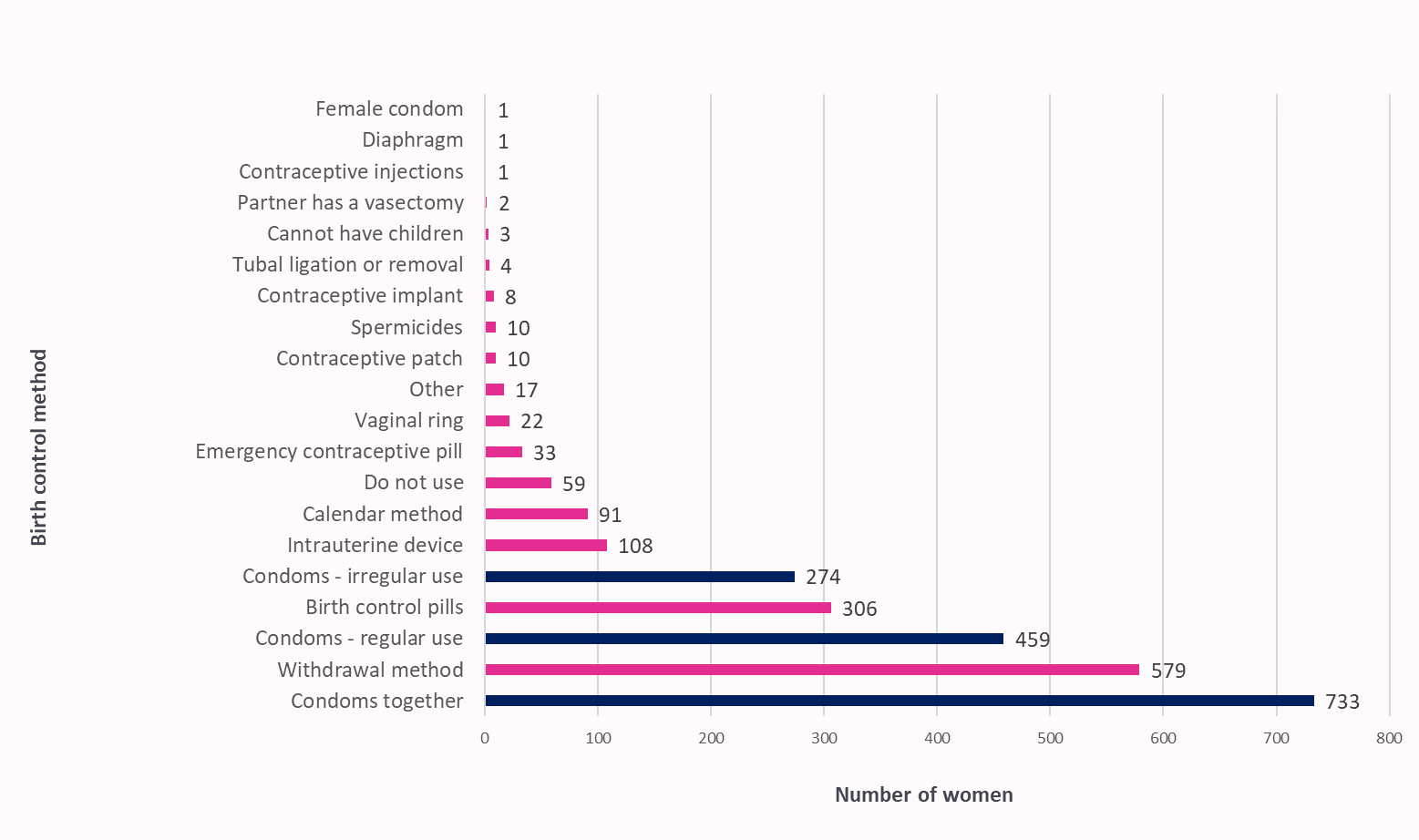Globally, women’s reproductive health is a topic that continues to have significant research and knowledge gaps. One of the main goals of this initiative is to close these gaps by gathering, analysing and distributing insights on women’s experiences with birth control. Skrinings.lv urges all women to complete this simple test and learn more about the health risks and benefits associated with birth control.
About the test
In November of 2021, skrinings.lv released a new educational contraception test that aimed to:
- Help women identify the lifestyle factors and health determinants that are important to consider when choosing the most suitable method of birth control.
- Assist researchers and public health specialists gain deeper insight into society’s levels of understanding and experience with the use of birth control, which is a fundamental step in developing impactful educational content and awareness campaigns.
The purpose of modern day birth control is not only to prevent unwanted pregnancies but also to do it in a way that offers the most suitable solution for each woman, taking into consideration various health benefits and possible risks. A personalised report outlining the most relevant information for each participant is provided after the completion of the test.
Results
Detailed results of the test can be found here.
Further republishing and referencing of the data needs to be coordinated with the skrinings.lv team by writing to info@skrinings.lv.
General description
In a little less than two months the educational contraception test was completed by 1586 women.
- Average age – 27 years (youngest participant – 14, oldest – 68)
- 94% (1489) of the people who completed the test live in Latvia, half of which in the city of Riga, 4% respectively (56 and 55) in Liepaja and Jelgava, 3% (44) Valmiera. In total there are representatives from 108 Latvian cities and municipalities.
- The average body mass index is 24 (the optimal body mass index is between 18.5 and 25)
Sexual activity and children
- 96% (1520) of women have started to be sexually active, 4% (66) have not yet.
- 90% (1368) of sexually active women have a stable sexual partner, 10% (1520) – do not.
- 79% (1206) of sexually active women are currently not planning on having a child, 15% (234) are considering of having one in the upcoming year, 5% (73) of women are currently trying to conceive, however 1% (7) of women have reached menopause.
Image 1 "Pregnancy plans"

- 40% (604) of sexually active women have children. 270 women have one child, 247 – two, 67 – three and 20 women have four or more children.
- 27% (162) of women who have children are currently breastfeeding.
- 11% (168) of sexually active women have had an abortion, 88% (1337) have not had one, 1% (15) do not wish to answer.
Health outcomes
- 79% (1259) of women replied that they currently have or previously have had a history of some gynaecologic disease or health condition. From these women 62% (778) noted having painful periods, 43% (543) irregular periods, 31% (389) identified having premenstrual syndrome (PMS).
Image 2 "Do you currently have or previously have had any gynaecological diseases or health conditions?"

- 44% (703) of women replied that they currently have or previously have a history of chronic illness or other health conditions. From these women 40% (280) noted having acne, 19% (136) migraines without aura, 18% (128) – chronic anaemia.
Lifestyle choices
- 55% (874) of women found it important for their chosen method of birth control to be environmentally friendly.
- 32% (500) of women smoke, including electronic cigarettes.
Image 3 "Do you currently smoke?"

As a result of 32% of women answering that they are smokers, we wanted to remind women who regularly smoke that after the age of 35 it is not advised to use birth control that contains estrogen. The combination of smoking and birth control can increase the risk of heart and cardiovascular diseases, such as stroke, heart attack and thrombosis. This can be explained by the fact that smoking damages and causes blood vessels to narrow, whereas the birth control pills very slightly increase the chance of developing a blood clot.
Forms of birth control that contain estrogen and therefore should be avoided by smokers:
- Combined oral contraceptive pill
- Vagina ring
- Contraceptive patch
Experience with birth control
The number of people who were asked this question – 1440. This questions was asked to women who are not currently planning a pregnancy and have not reached menopause. Number of replies – 1988. The question allowed to select several answers.
Image 4 "Currently used method of birth control"

The most popular method of birth control are condoms, which are used by 51% (733) of women. From these women, 459 noted that they use condoms regularly, however 274 irregularly.
As the main reasons for using condoms women noted:
- Good efficacy in preventing pregnancy – 75% (549);
- Easy to use – 67% (489);
- Easy to access – 66% (486);
- Decreases the risk of sexually transmitted diseases – 50% (368);
- No or minimal side effects – 41% (298).
! Reminder that condoms are the only form of birth control that can completely prevent the transmition of sexually transmited diseases (STDs). If you currently do not have a stable partner, it is highly advised to use a condom. At the start of a relationship do not hesitate to ask your partner about their STD status or offer to go get checked together. Despite the level of trust you might have for your partner, latent infections that do not manifest as visible symptoms exist and are transmissible through sexual contact.
The second most popular method was the withdrawal or pull-out method. This method was used by 40% (579) women, which is an incredibly high amount considering that this is an unsafe and ineffective birth control method.
As the main reasons for using the withdrawal method women identified:
- Easy to use method – 63% (367);
- Does not impact sexual pleasure – 50% (289);
- No or minimal costs – 29% (167);
- No or minimal side effects – 29% (167);
- Partners suggestion – 17% (100).
! The withdrawal method is a form of birth control where the man removes his penis from the woman's vagina exactly before his orgasm – ejaculation – as a way of preventing pregnancy.
Despite this being an extremely popular method, it is highly unreliable and results in a significant amount of unwanted pregnancies and abortions. Strongly reconsider the use of this method if you are trying to avoid becoming pregnant or contracting a sexually transmitted disease.
The following most popular method of birth control are contraceptive pills. 21% (306) of the test participants identified using birth control pills.
As the main reasons for using contraceptive pills, women noted:
- Good effectiveness in preventing pregnancy – 68% (208);
- Regulates menstrual cycle – 59% (179);
- Easy to use – 55 % (168);
- Alleviates painful periods – 46% (141);
- Easy to access – 34% (103).
As a reminder, hormonal contraception, which includes birth control pills, has a range of additional beneficial qualities that can significantly improve the lives of women even if they are currently not sexually active. For example:
- Regulate menstrual cycle – easier to predict when the period begins and ends;
- Alleviates menstrual cycle related pain and cramps;
- Alleviate symptoms of premenstrual cycle syndrome (PMS) and menstrual migraine;
- Decrease the manifestations of polycystic ovarian syndrome (PCOS);
- Alleviate symptoms of endometriosis;
- Decrease the risk of ovarian and endometrial tumour formation;
- Improve skin condition and acne.
To find out more about the impact of hormones on the body, and its connection to breast cancer risk and the most commonly voiced concerns read the conversation between gynaecologist Elizabete Pumpuri and skrinings.lv ambassador gynaecology-resident Lauru Lūsi.
Statements and myths
As part of the test women were presented various statements and asked to identify those, which they found to be true. In the end results page, women were able to see whether the statements turned out to be true alongside a concise explanation. Below is a quick summary of the most frequently selected statements, you can find the full descriptions debunking common assumptions and myths after completing the test.
Statements most commonly identified as being true:
1. Using other medication can impact the effectiveness of birth control pills – 48% (769) women identified this to be true.
In most cases where birth control pills are used together with other medications, such as antibiotics, the contraceptive method remains safe and does not decrease in effectiveness. There are however exceptions, when the use of medication can counteract the effectiveness of birth control and vice versa – birth control can impact the effectiveness of the medication. Please consult your doctor before beginning the use of new medication whilst taking birth control pills.
2. Inserting the implant and IUD is painful – 37% (588).
The process of insertion can be painful, however there are ways to alleviate the pain. If you are concerned about the potential pain during the insertion process, communicate this to the gynaecologist in order to find the most appropriate way to avoid and minimise the discomfort – anaesthesia significantly alleviates and reduces pain during this process.
3. The body requires a break after the prolonged use of oral contraceptive pills – 32% (510).
No, this is not the case. You can confidently continue the use of birth control pills in the long-term if you feel comfortable doing so and there are no additional risk factors or side effects that develop over time, potentially negatively impacting your quality of life or health.
4. An IUD is only suitable for women who have given birth before – 21% (334).
This statement used to be considered correct for some time, however in recent years a smaller size hormonal IUD device has been inserted in women who have not given birth before.
5. There are no benefits to birth control for women who are not sexually active – 14% (220).
There are several additional benefits of hormonal birth control that can significantly increase the quality of life for women who are not currently sexually active. Examples of these can be found in the information on birth control pills located above.
Familiarise yourself with the effectiveness of various birth control methods, their benefits and risks in the detailed final report made available after the completion of the test. If you have already completed the test, you can do so repeatedly.
We are happy that you are making responsible decisions about your health!
If you are one of the 1586 women who has completed the test already, we want to say a heartfelt thank you for taking the time to share your previous experience! It helps us to collect and analyse information that may help you and other women make more informed decisions about choosing the most suitable method of birth control and ways of taking care of your reproductive health.
If you have yet to complete this test, we urge you to do so by clicking here. The results of the test will provide you with useful information and will serve you as a guide in your next conversation with a doctor if you are still in the search of your method of birth control or plan on switching it in the upcoming future.
By becoming more educated and applying our knowledge in practice, we are actively contributing to decreasing the amount of unwanted pregnancies, lowering the spread of sexually transmitted diseases and harnassing the benefial properties of birth control in improving the qualities of lives of women.
